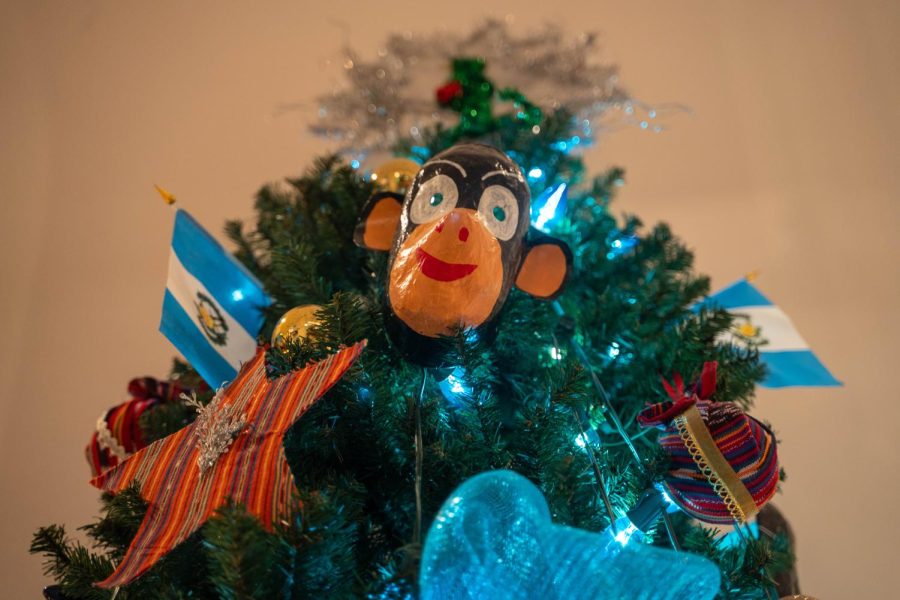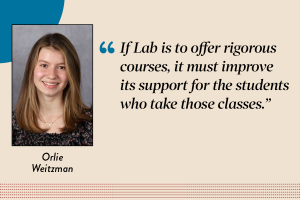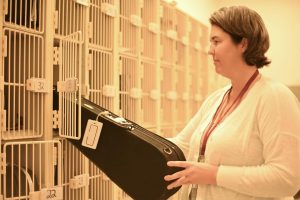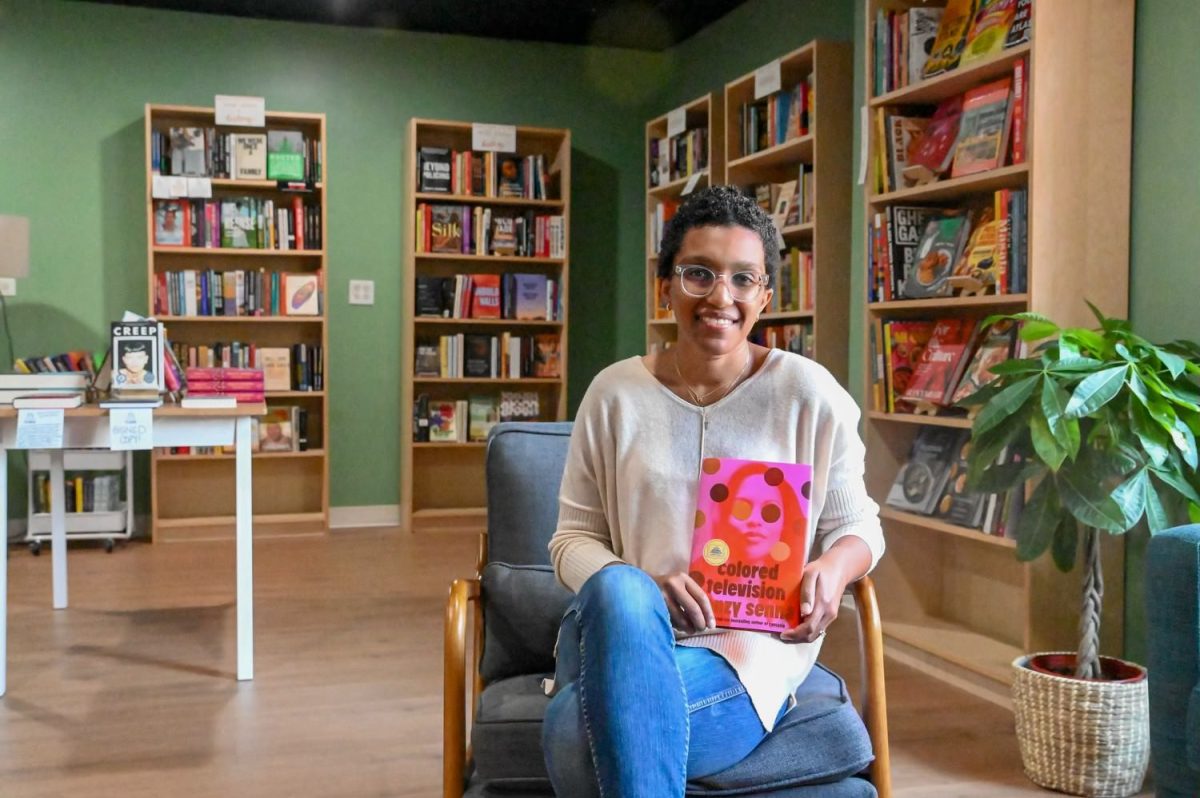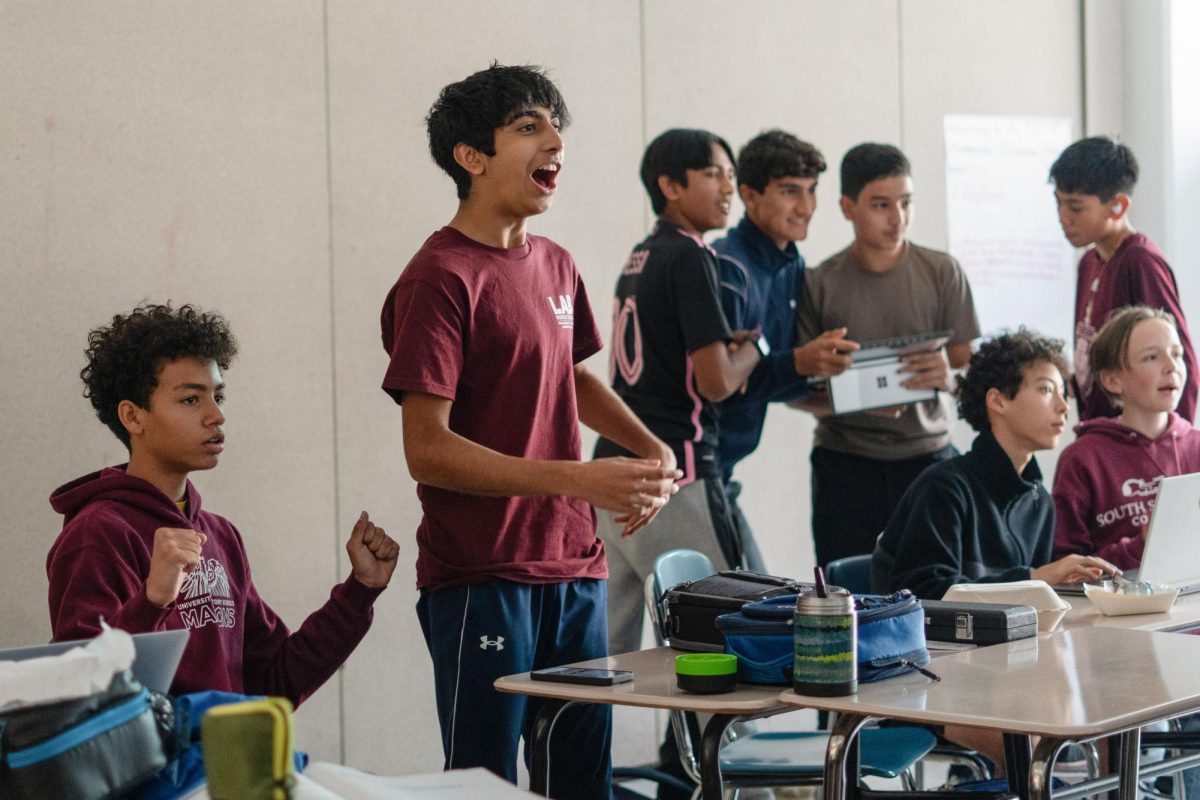Bringing communities together: Christmas Around The World displays different holiday traditions
December 7, 2022
22-22A Grand Tree filled with more than 45,000 lights and decorated with purple, pink, silver and gold ornaments stands 45 feet tall on the third floor rotunda of the Museum of Science and Industry for the Christmas Around the World exhibit. The Grand Tree is surrounded by smaller trees decorated with lights and ornaments illuminating the rotunda. Each of the smaller trees are decorated a different way, representing cultures and holiday customs around the world.
This year is the 80th anniversary of this Chicago tradition and the exhibit ends Jan. 8, 2023.
This tradition began in 1942 to represent the countries fighting alongside the United States during World War II. The exhibit also went on during the coronavirus pandemic.
“It was a single tree that was decorated every day for 12 days,” said Peter Vega, MSI’s deputy director of communications and engagement. “So it was a tradition that the museum started in 1942, as a way to, you know, bring communities together in a challenging time in the world.”
Over the years, the number of trees has increased, expanding the representation in the exhibit to reflect the diversity of Chicago. Christmas Around the World shows more than 50 trees displaying the different ways customs are celebrated around the world.
Mr. Vega said what brings the trees together is the community involved. The trees are decorated by community volunteers
Japan, Kenya and Australia are just a few of the countries that have trees dedicated to them. Community organizations and volunteers from Chicago decorate each tree and display to represent the different holiday traditions. Australia’s tree is decorated with different native animals, Japan’s tree is filled with origami and handcrafted ornaments while Kenya’s tree uses different childrens toys, clothes and flags to decorate.
“Every few years, we have new community members reach out to us wanting to decorate different trees. And we open up the opportunities for that,” Mr. Vega said. “So really, the driving force of the whole exhibit is the community in Chicago that gets behind it. We don’t decide what trees are included. It’s more of a community that drives that.”
In addition to the trees, a part of the exhibit is the Holiday of Light Celebration. Around the rotunda with the trees vignettes represent the Chinese New Year, Diwali, Kwanzaa, Ramadan, Hanukkah and St. Lucia Day.
“We also include the other holidays that are broader than just Christmas because the trees obviously are more of a symbol of Christmas,” Mr. Vega said. “But we have these vignettes that are decorated by different volunteers as well that represent different cultural holidays.”
Mr. Vega says it’s important to show the culture and tell the history of different heritages around the world, and especially in Chicago because of the city’s diversity.
“We really want this to be a moment for everyone as a reminder to appreciate differences and the similarities that make everyone unique. It’s really a moment to bring everyone you know together in challenging times,” Mr. Vega said, “We had this exhibit during COVID, and we wanted to make sure to bring community together during challenging times the same way that it was done in 1942.”
Eighty years after the first tree was decorated for 12 days in 1942, the Christmas Around the World exhibit creates a place to show how different cultures celebrate the holidays. Representing a variety of customs brings light to the diversity of Chicago and the different cultures that make up the city.



